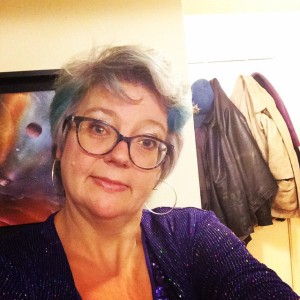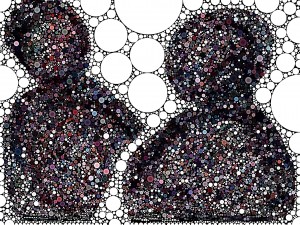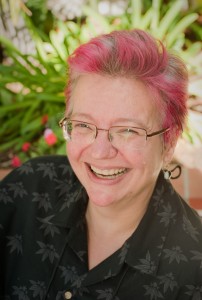
 So I read a book recently and I loved some parts of it and other parts…not so much. And I’ve been thinking about it ever since because there was one part of it I just adored but I don’t feel like I could tell anyone to read the book without a big “hey and you should watch out for this” addendum. I’d bounced off a previous book by this author with what was supposed to be grimdark but had a big ol’ weirdly ungrimdark gendered cliché early on that made me think so hard about it that I couldn’t pay attention to the rest of the book, so I was already a little cautious, yet optimistic because I knew the author to be a good writer.
So I read a book recently and I loved some parts of it and other parts…not so much. And I’ve been thinking about it ever since because there was one part of it I just adored but I don’t feel like I could tell anyone to read the book without a big “hey and you should watch out for this” addendum. I’d bounced off a previous book by this author with what was supposed to be grimdark but had a big ol’ weirdly ungrimdark gendered cliché early on that made me think so hard about it that I couldn’t pay attention to the rest of the book, so I was already a little cautious, yet optimistic because I knew the author to be a good writer.
I’ve talked before about reading when the protagonist is markedly not you, and how used to it women — and other members of the vast majority the mainstream media calls Other — become. And this was a good example of a very young, very male, very heterosexual book. Which God knows I’m not opposed to. I remain a huge fan of the Warren Murphy and Richard Sapir Destroyer series and Doc Savage was a big influence on me, growing up.
So why did this book hit me so hard in an unhappy place? Because it was so smart and funny and beautifully written and involved connected stories about a favorite city and magic, which are three of my favorite things. And because it had a chapter that was one of the best short stories about addiction that I’ve read, and that left me thinking about it in a way that will probably shape at least one future story.
And yet. And yet. And yet. Women were either powerful and unfuckable for one reason or another or else fell into the category marked “women the protagonist sleeps with”, who usually didn’t even get a name. Moments of homophobic rape humor, marked by a repeated insistence on the sanctity of the hero’s anus, and a scene in which he embraces being thought gay in order to save himself from a terrible fate, ha ha, isn’t that amusing. And I’m like…jesus, there is so much to love about this book but it’s like the author reaches out and slaps me away once a chapter or so.
...
Women in leadership positions face a lot of unwonted and unwanted bullshit. Self care’s important, both physically and mentally. Here, for your weekend, is some music. This is some of the playlist I listen to when walking.
...

One of the many interesting (and sometimes positive) things that’s come out of that controversy has been a lot of examinations of Internet culture and many of its subsets. Before last year, I had only the vaguest idea what “chan culture” would be, so I found this piece really fascinating, particularly because questions about anonymity are (imo) going to continue to rear their heads whenever they bump into notions of transparency in coming years.
The full piece, How imageboard culture shaped Gamergate, appeared on BoingBoing. Its author has produced a lot of interesting pieces about Gamergate, usually composed as Storify pieces, such as these: Gamergate, Sexism, and Tribalism; Why I Oppose #Gamergate
The article is talking specifically about image boards, and here’s a chunk from it that describes the culture:
These anonymous imageboards have their own idiosyncratic culture, despite the lack of permanent identity. Posters call themselves anons, or occasionally channers. While anonymity is a core part of this identity, merely being anonymous does not make you an anon. Rather, it’s about identifying as a larger whole. Capital-A Anonymous, such as the Project Chanology protestors and the hacking/activist groups like @youranonnews, are anons, but most anons don’t think of themselves as part of Anonymous.
Without identity, every anon is whoever they want to be at the moment. It’s freeing! Anons exalt these imageboards as the only place people can truly be themselves, without being burdened by their identity or consequences. This includes genuinely awful or hateful opinions. Anons have a broad, often absolutist view of free speech, sometimes extending that so far as to include threats of violence or extreme pornography. Anons are extremely protective of their culture and this very broad view of free speech, because of both great faith in their ability to self-police argument and an unconscious, internal reliance on irony.
The atmosphere is that of a paradoxically jovial angry mob. Almost everyone sees their own point of view as the consensus, assuming that most people most people agree with them. Any possibly contentious statement is presumed to be ironic, told as a joke or to rile up people who disagree. Since everyone assumes that anyone who disagrees is arguing in bad faith and doesn’t mean what they’re saying, anyone who disagrees is a fair target for apparently hateful mockery. This basic assumption of bad faith applies even when arguments are long-lasting and well-known: for example, the console war arguments in /v/, 4chan’s video games sub-board. However, this mockery is defanged by anonymity and irony.
Everyone’s anonymous, so a poster can just join the winning side of an argument, cheerfully mocking their own older posts. One poster can even play both sides from the start. Every anon can choose whatever opinion they want to have on a post-by-post basis, so everything flows smoothly even as people hatefully attack each other for having the wrong opinion. Anons believe in this free marketplace of ideas: good ones survive the firestorm, while bad ones burn to ash as everyone dogpiles on mocking them.
Wayne and I were talking about this conception of discussion/argument today and I can at least partially understand how it’s shaped some of the conversation within Gamergate (the overall situation, not the group) and created many of the problems. (Anders Sandburg has an interesting piece about such culture clashes.) I think it’s important to look at the background people are coming from and the Internet etiquette norms that they’ve absorbed.
At the same time, bad faith arguments are something I don’t practice and I find trolls kinda appalling, because the idea of getting enjoyment from making other people angry, upset, or otherwise unhappy seems something only a retrograde would relish. I blogged about arguing on the Internet a while back and said I’d follow up and talk about bad faith argument, but I never have, because I find its habitual practitioners antithetical to the way I try to think.
Don’t get me wrong. I like debate, and life with Wayne is a lively series of conversations in which one or the other will often take the role of devil’s advocate just to see how sound or defensible an idea is. But that seems different to me than taking on the Internet identity of someone who believes something just to see if you can get other people riled up enough to waste time on composing eight page replies to your argument rather than something, I dunno, actually productive or enjoyable.
But, as Wayne can testify, I am painfully earnest about a number of things, including the idea that the human race should be advancing and that part of that advance is being fairer about our treatment of the people and world around us. The idea that love is both greater than and preferable to hate. That cruelty only creates more cruelty. That civility and an assumption of good faith should be the baseline, rather than the exception. And that we are fallible creatures who are nonetheless capable of learning from both experience as well as questioning ourselves.
Part of my plea in the Clarkesworld column is that we stop arguing in bad faith and lazy categories. It’s a Quixotic fight, but I’ll continue to carry its banner. And part of that banner is to argue in good faith, to ask questions and interrogate the world around me to see what blinders it’s imposing on me. That’s a vital part of making good art. And good conversation.
...

Charlotte Perkins Gilman was an American editor, writer, and lecturer whose short story “The Yellow Wallpaper,” about a woman’s descent into madness, is often revisited in college literature classes. She was a single mother who supported herself by writing — no small accomplishment today, let alone at the time she was doing so, the late 19th and early 20th centuries.
Herland is often treated as though it stands alone, but it’s actually the middle volume of a trilogy, preceded by Moving the Mountain in 1911 and followed by With Her in Ourland in 1916. The work was originally published as a serial in a magazine called The Forerunner that Gilman edited; it did not appear as a complete book until 1979, when Pantheon Books published it.
Herland is a utopian novel, in which three men, Vandyk (the narrator), Terry, and Jeff stumble across a civilization where the women reproduce asexually and there are no men. This turns out to lead not to a perfect civilization, but certainly one that seems more appealing than the one Gilman found herself in. Gilman uses the book as a device with which to explore constructed ideas of gender. It is an appealing society in many others; in others, it’s a bit cold and calculating. Girls who are overly rebellious or mouthy, for example, will not be allowed to reproduce.
One of the things that’s refreshing about the book is that it’s not written as though the lack of males is a deficit that warps society. Instead, it’s simply the way things are, and the Herlanders seem capable of getting along quite well without it.
Gilman was one of the important suffrage speakers of her time and a bit of a polymath. If you want to go further into her writing, I suggest a piece of nonfiction, her work on economics, Women and Economics: A Study of the Economic Relation Between Men and Women as a Factor in Social Evolution, which originally appeared in 1898.
You can find Herland online in its entirety at Project Gutenberg, along with much of Gilman’s other work.
#sfwapro
...

I think that’s pretty darn cool. Because I am so tired of what’s been done to the word feminist by those who oppose it, the redefinition of it to a hateful caricature. I taught Women’s Studies for a while and time after time, smart, fierce, wonderful young women would say to me, “I’m not a feminist, but…” and then something aligned with feminism would come out of their mouth. And it made me want to weep, every time, that the word had been recast to the point where they did not want to be identified by it.
I read a piece today that said, “Before you call her a feminist, know she’s voted Republican!”
So what? Does that author really think there aren’t Republicans who are feminists? Another piece said OMG she poledanced in a music video. Again, so what?
...

Who: Read this if you’re a woman, whether or not you call yourself a feminist. Read it if you’re a man trying to write realistic women, because the structures Griffin talks about are ones that affect all of this, but particularly women. Read it if you don’t mind some poetry mixed in with your thinking.
Why: Read this to reexamine the words and metaphors we use to describe both nature and women, to understand the attitudes behind the language.
He says that woman speaks with nature. That she hears voices from under the earth. that wind blows in her ears and trees whisper to her. That the dead sing through her mouth and the cries of infants are clear to her. But dfor him this dialogue is over. He says he is not part of this world, that he was set on this world as a stranger. He sets himself apart from woman and nature.
And so it is Goldilocks who goes to the home of the three bears, Little Red Riding Hood who converses with the wolf, Dorothy who befriends a lion, Snow White who talks to the birds, Cinderella with mice as her allies, the Mermaid who is half fish, Thumbelina courted by a mole.
When: Read this when you want to be lulled by words out of your own body and into the material forms of tree and earth and shell.
Where and how: Read this near a window, where you can look out at trees or sky or mountains or water.
#sfwapro
...
 The following is an expansion of a piece I wrote for a Book Smugglers roundtable.
The following is an expansion of a piece I wrote for a Book Smugglers roundtable.
Recently — or perhaps not so recently — much has been made of women writing science fiction. Often it’s coupled with a complaint about “PC” behavior stifles creativity or how leftist writing “has no new ideas.”
Hmm. Speaking as an unabashed leftist and someone lacking a penis, which may bias me somewhat, in my experience the opposite is true. I find much more interesting stuff in those who are willing to question the status quo, rather than simply write fiction using the same old stories, but this time with lasers! or infinity drives! or whatever. As Patty Jansen put it recently in her blog post, “There are girl cooties on my spaceship — on women writing hard SF,” “There are many younger readers out there who do not want their SF with sauce of sexist golden age nostalgia.”
To talk about this, though, I need to mention a book I’ve been recently reading, David Zindell’s Neverness. It’s a terrific book with some amazing writing in it. Here, for example, is a passage from page 23, which I love for its ability to seed in information about societal structures while describing a crowd:
“We received our pilot’s rings late in the afternoon of the next day. At the center of Resa, surrounded by the stone dormitories, apartments, and other buildings of the college, the immense Hall of the Ancient Pilots overflowed with the men and women of our Order. From the great arched doorway to the dais where we journeymen knelt, the brightly colored robes of the academicians and high professionals rippled like a sea of rainbow silk. Because the masters of the various professions tended to cleave to their peers, the rainbow sea was patchy: near the far pillars at the north end of the Hall stood orange-robed cetics, and next to them, a group of akashics covered from neck to ankle in yellow silk. There were cliques of scryers berobed in dazzling white, and green-robed mechanics standing close to each other, no doubt arguing as to the ultimate (and paradoxical) composition and nature of the spacetime continuum, or some other arcanum. Just below the dais was the black wavefront of the pilots and master pilots. I saw Lionel, Tomoth and his brothers, Stephen Caraghar and others that I knew. At the very front stood my mother and Justine, looking at us — I thought — proudly.”
Great stuff, yeah? And at the same time, I find the book puts me, as a female reader, in an odd position. The women in the book so far are either relatives or love interest, and their defining characteristics seem somewhat odd: the male protagonist’s mother’s defining characteristic is that she’s chubby from eating too many chocolate candies, while much is made of his aunt’s sexual rapacity.
In a novel, often the main point of view is our lens for the book. If the book were a first-person shooter game, this is the character one maneuvers through the game. Women are used to having this male perspective imposed on them; we’ve been reading those narratives ever since we started reading.
...

The first time I dyed it, I was about to head off to my first Wiscon ““ a large feminist science fiction convention held yearly in Madison, Wisconsin. As I’ve found the case at sf conventions since then, I wasn’t the only person there with an odd hair color; I glimpsed rainbows of pink, blue, and green. And I realized it was becoming. Complete strangers would lean over and whisper, “I like your hair,” including two flight attendants on the way home.
After the con the color faded, softer and softer, until finally, when I went to get a haircut, the hairdresser was cutting away dusty rose tips. I looked in the mirror and saw a middle-aged woman with a short, practical cut.
I bought a new kit on the way home and re-pinked my hair that afternoon.
...
Want access to a lively community of writers and readers, free writing classes, co-working sessions, special speakers, weekly writing games, random pictures and MORE for as little as $2? Check out Cat’s Patreon campaign.

"(On the writing F&SF workshop) Wanted to crow and say thanks: the first story I wrote after taking your class was my very first sale. Coincidence? nah….thanks so much."

(science fiction, story) When he realized how upset his wife was, George wondered if he might have miscalculated. Normally a quiet and loving partner, she was unpacking the dishwasher with a great deal of clattering and muttering.


This site is protected by reCAPTCHA and the Google Privacy Policy and Terms of Service apply. This site is a participant in the Amazon Services LLC Associates Program, an affiliate advertising program designed to provide a means for sites to earn advertising fees by advertising and linking to Amazon.com.